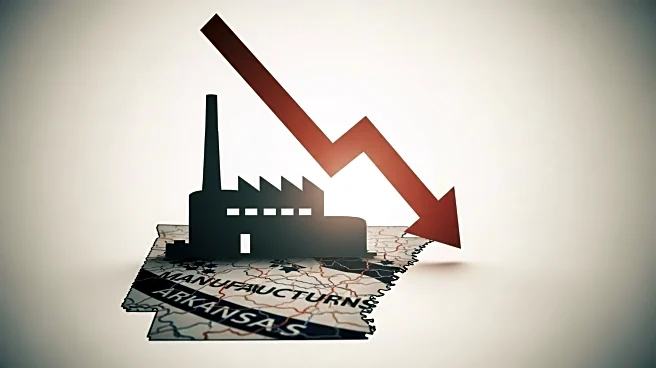What is the story about?
What's Happening?
The latest Shippers Conditions Index (SCI) from freight transportation consultancy FTR indicates a slight improvement in market conditions for shippers, although the index remains in negative territory. The SCI, which aggregates various market influences affecting the transport environment, recorded a score of -2.0 for July, an improvement from June's -2.6. Despite the improvement, fuel costs continue to pose challenges, while freight dynamics have become more favorable, with rates reaching their most favorable levels since October 2024. The outlook for the SCI suggests a near-neutral environment through most of 2026, although regulatory changes could lead to a more negative outlook.
Why It's Important?
The improvement in the Shippers Conditions Index is significant for the U.S. transportation industry, as it suggests a potential easing of unfavorable conditions for shippers. However, the ongoing challenges, such as high fuel costs and regulatory changes, could impact the ability of trucking companies to expand. The recent crackdown on foreign nationals holding commercial driver's licenses and scrutiny over English language skills, along with record insurance premium costs, add pressure to the industry. Additionally, a new 25% tariff on heavy trucks could further constrain growth. These factors could lead to tighter trucking capacity, affecting freight dynamics and potentially leading to higher costs for shippers.
What's Next?
Looking ahead, the transportation industry may face increased challenges as regulatory changes take effect. The tightening of trucking capacity due to driver shortages and new tariffs could lead to a hotter market once freight volumes recover. Shippers may need to adapt to these changes by exploring alternative strategies to mitigate costs and ensure efficient operations. The industry will likely monitor these developments closely, as they could have significant implications for freight rates and overall market conditions.
Beyond the Headlines
The regulatory changes and tariffs could have broader implications for the U.S. economy, potentially affecting supply chain dynamics and consumer prices. The transportation industry may need to innovate and adopt new technologies to navigate these challenges effectively. Additionally, the focus on driver qualifications and insurance costs highlights the need for ongoing industry scrutiny and adaptation to evolving market conditions.
AI Generated Content
Do you find this article useful?














